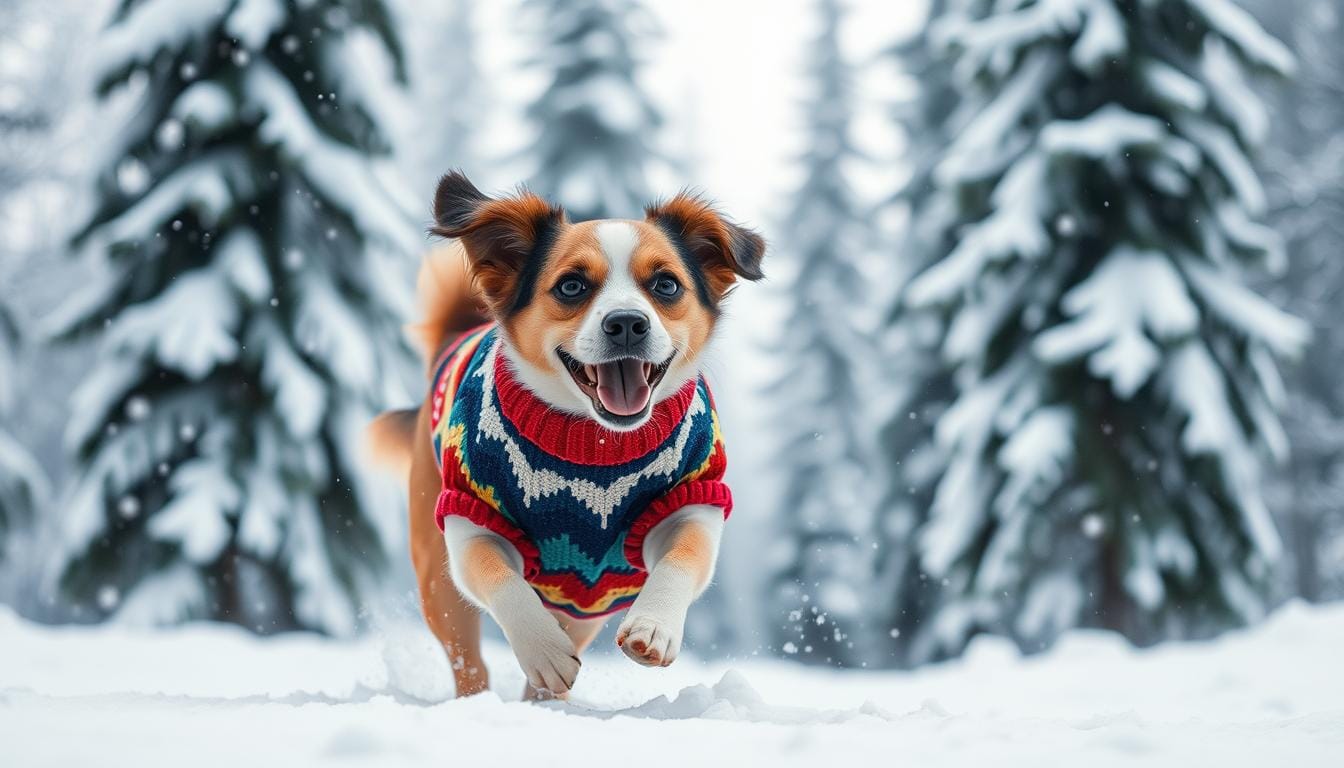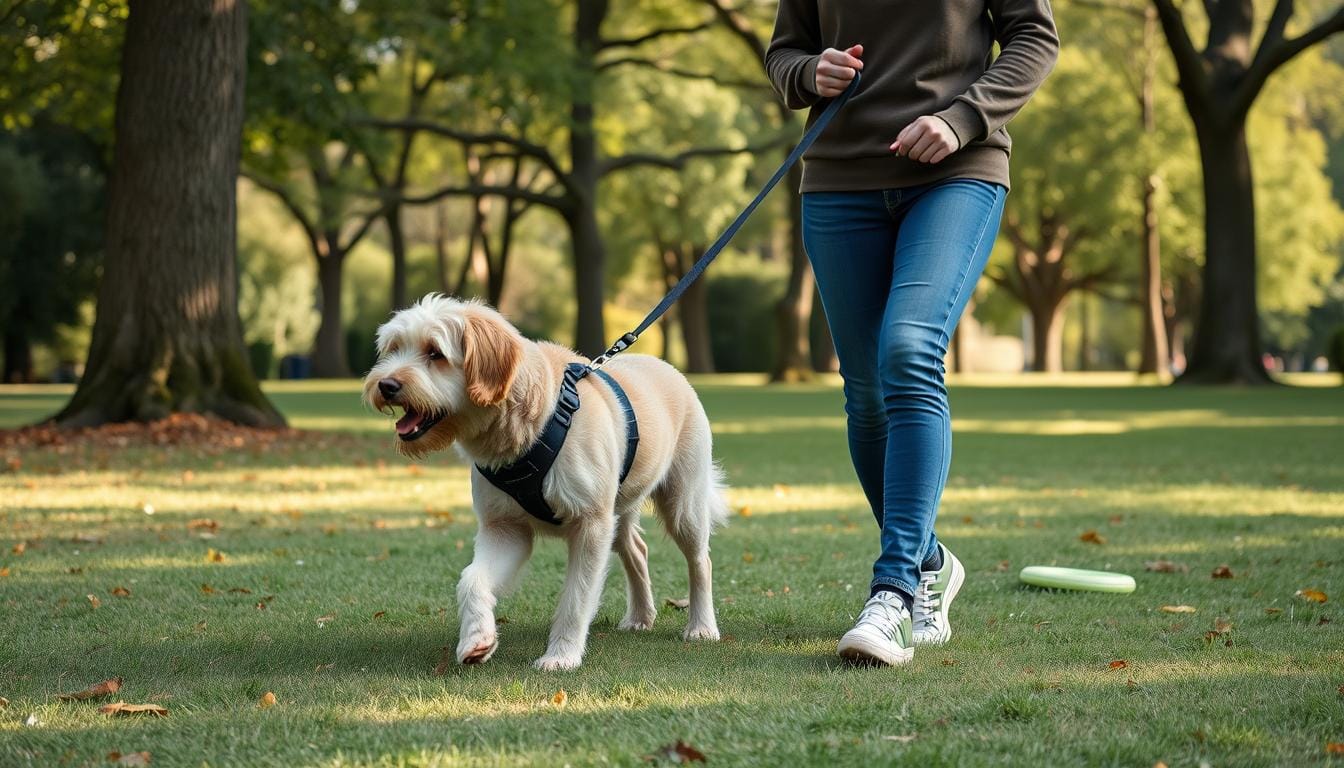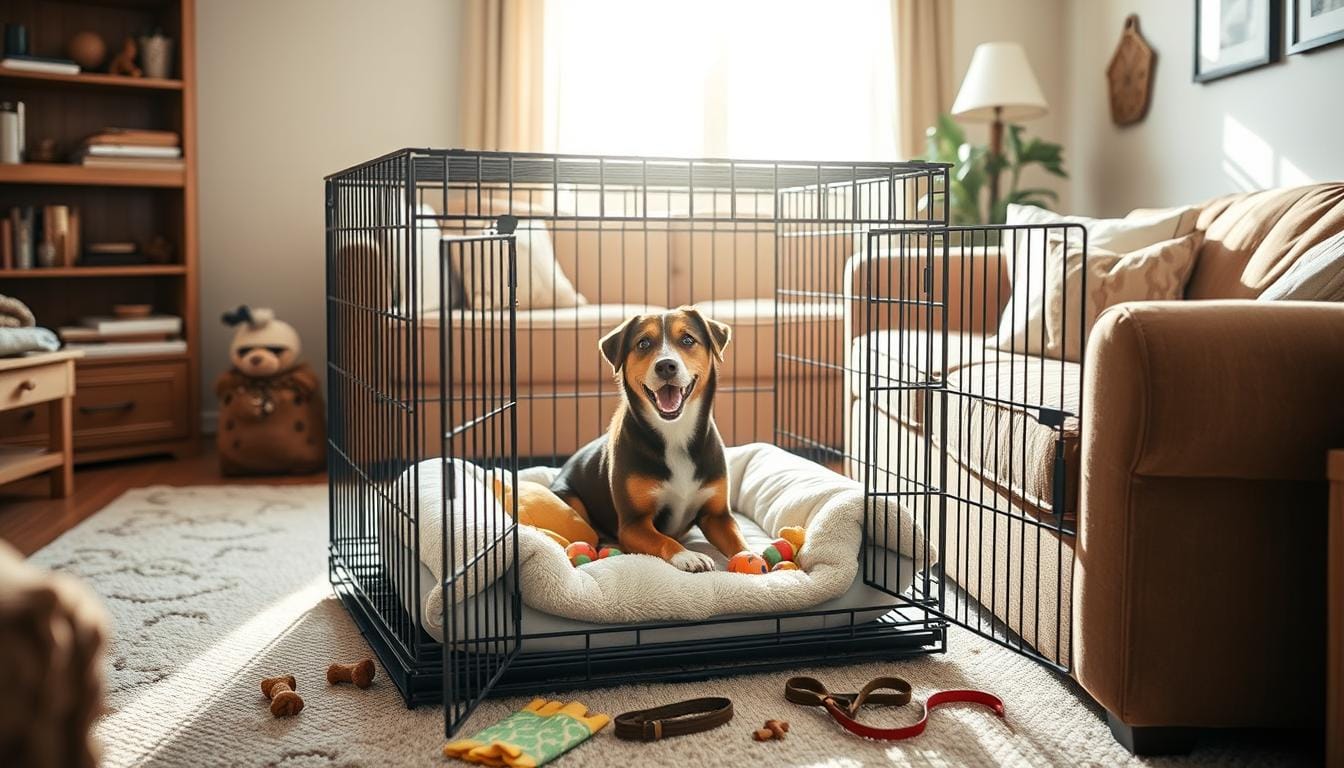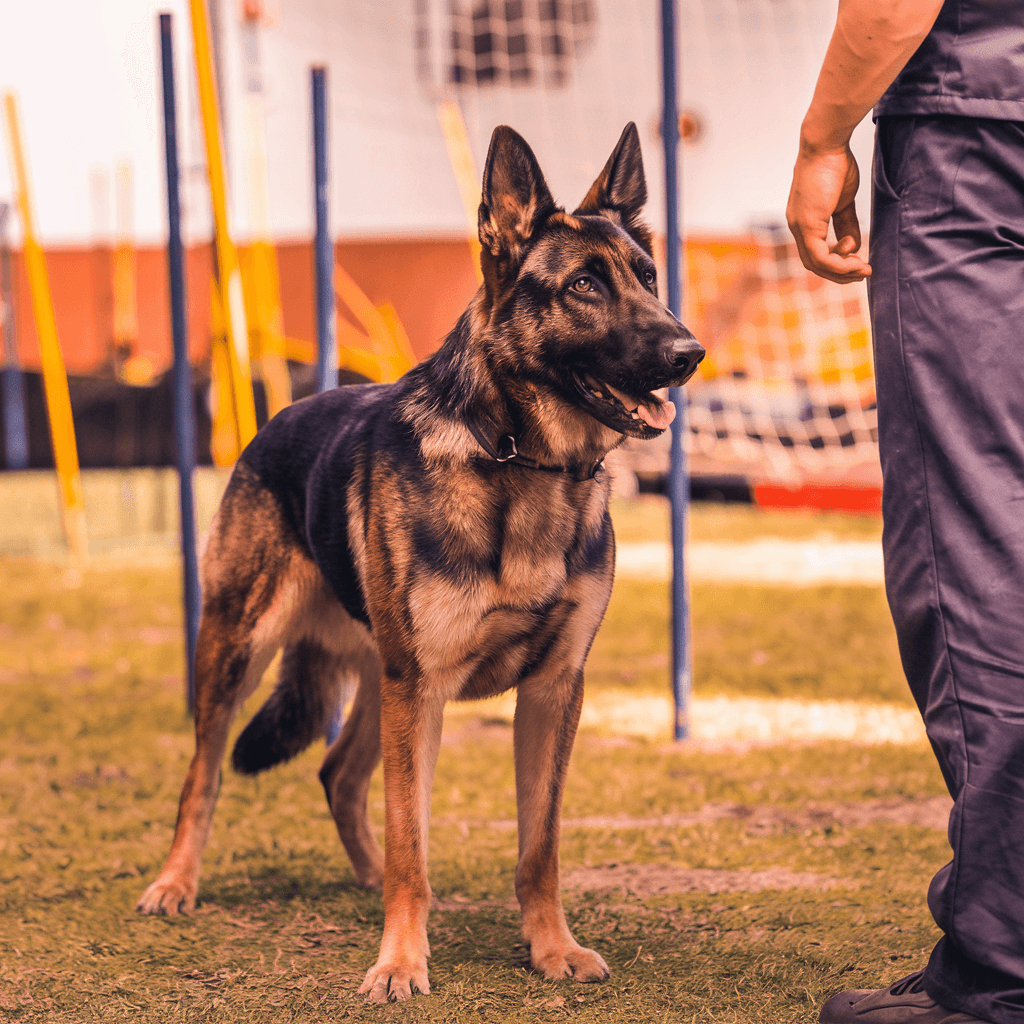Winter can be tough on our furry friends. As dog owners, we need to step up our game to keep our pups warm, safe, and healthy during the cold months. Let’s dive into some crucial winter dog care tips that’ll help your pooch stay cozy and content.
Cold weather brings unique challenges for dogs. Even those with thick fur coats can feel the chill. Short-haired breeds and senior dogs are especially vulnerable, often needing extra protection like sweaters or heated beds. It’s not just about comfort – frostbite and hypothermia are real risks for our canine companions.
Outdoor hazards increase in winter too. Salt-treated sidewalks can irritate paws, causing dryness and cracking. Snow can hide dangerous objects, and ice poses slip risks. We’ll cover how to navigate these challenges and keep your dog safe during outdoor activities.
Indoor care is just as important. Proper bedding, safe heating solutions, and grooming routines all play a part in maintaining your dog’s health during winter. We’ll explore these aspects and more to ensure your pup stays in top shape throughout the cold season.
Key Takeaways
- Protect dogs from frostbite and hypothermia risks
- Use winter gear for short-haired and senior dogs
- Watch for signs of cold stress in your dog
- Maintain proper paw care to prevent irritation
- Adjust indoor comfort and nutrition for winter needs
- Be aware of winter-specific hazards for dogs
Understanding Cold Weather Risks for Dogs
Winter brings challenges for our furry friends. Keeping them safe from cold weather is key to prevent health issues. Dogs face risks like frostbite and hypothermia. Let’s learn how to protect our pets from these dangers.
Signs of Frostbite in Dogs
Frostbite can hit a dog’s ears, paws, and tail. Look out for these signs:
- Pale or gray skin
- Cold and hard skin texture
- Swelling or blistering
Recognizing Hypothermia Symptoms
Hypothermia happens when a dog’s body temperature gets too low. Watch for these symptoms:
- Intense shivering
- Lethargy or weakness
- Slow breathing
- Unresponsiveness
Temperature Tolerance Limits
Dogs of different breeds can handle cold differently. Short-haired and small dogs are more at risk. If it’s too cold for you, it’s likely too cold for your dog too.
| Dog Type | Cold Tolerance | Special Considerations |
|---|---|---|
| Short-haired breeds | Low | Need winter coats, limited outdoor time |
| Long-haired breeds | Higher | Regular grooming, check for ice buildup |
| Senior dogs | Low | Extra warmth, joint support |
| Puppies | Low | Limited exposure, frequent warm-ups |
Remember, cold weather affects each dog differently. Watch your pet’s behavior and adjust their winter care. By understanding these risks, we can keep our dogs safe and warm during the cold months.
Protective Winter Gear for Your Dog
Winter brings challenges for our furry friends. We must give them the right gear to stay safe and warm. Let’s look at some key winter accessories for dogs.
Choosing the Right Winter Coat
Dog winter coats are key to protect your pet from the cold. The Hurtta Extreme Warmer Insulated Dog Parka is a great pick. It has 3M reflectors for visibility and is lightweight for walks.
For indoor warmth, the Canada Pooch Soho Dog Sweater is perfect. It keeps your dog cozy without getting too hot.

Protective Boots and Paw Wear
Dog paw protection is crucial in winter. Muttluks Deluxe Winter Dog Boots are waterproof, keeping paws dry in snow and wet. For a natural option, try Musher’s Secret Paw Protection Natural Dog Wax. It creates a barrier on paws for winter walks.
Indoor Comfort Accessories
Pet heating pads and warm bedding are key for indoor comfort. The Best Friends by Sheri Original Calming Shag Fur Donut Cuddler is a plush bed for dogs seeking warmth. The FurHaven ThermaNAP Faux Fur Self-Warming Dog & Cat Mat stores body heat well.
| Accessory | Feature | Benefit |
|---|---|---|
| Nite Ize NiteHowl LED Safety Necklace | 60-hour LED light | Visibility in low light |
| Rex Specs Goggles for Dogs | Eye protection | Clear vision in snow |
| Rocket & Rex Waterproof Blanket | Easy to clean | Warmth and comfort |
Smaller dogs and those with light fur need extra protection in the cold. Always check with your vet to ensure your dog is safe outside.
Paw Care and Protection in Winter
Winter is tough on our furry friends, especially their paws. Keeping their paws safe is key to avoid dry, cracked, or bleeding pads. Let’s look at ways to keep your pup’s paws healthy and comfy.
Booties are a great choice for paw protection. They keep paws warm and safe from harmful stuff. They come in many sizes to fit different breeds and paw shapes. For dogs who don’t like booties, paw balms or waxes can help. They create a barrier to prevent dryness and cracking.
It’s important to check your dog’s paws often. Look for cracks, cuts, bleeding, or ice balls between toes. Trim nails and hair between paw pads to stop ice from building up. After walks, clean paws to remove salt and dirt. This stops them from eating harmful stuff and helps find irritation early.
- Use pet-safe ice melts around your home
- Apply paw balm before and after walks
- Consider shorter, more frequent walks in extreme cold
- Create cozy indoor spots with mats or blankets
Choosing the right pet deicing products is key. Pick ones that are safe for your dog and the environment. A mix of prevention, grooming, and care after walks keeps paws healthy in winter. This helps your dog stay happy and healthy.
Indoor Comfort and Warmth Essentials
Winter can be tough on our furry friends. It’s important to make their indoor space cozy. Let’s look at ways to keep your dog warm and comfortable.
Selecting Proper Bedding
A warm place to sleep is key for your dog’s comfort. Choose beds that are off the floor to keep them warm. Thermal blankets add extra warmth. In fact, 65% of pet owners use heated beds or insulated houses in winter.
Safe Heating Solutions
Keep your home between 68-72°F for your dog’s comfort. Be careful with space heaters and fireplaces. Use barriers to stop burns. 40% of pet owners use pet-safe heaters in well-ventilated spots.

Managing Indoor Temperature
Keep humidity levels right to avoid dry skin. Using a humidifier can help. For outdoor areas, heated dog bowls keep water from freezing. Make sure outdoor shelters are insulated and weatherproof if your dog goes outside.
| Winter Comfort Item | Usage Rate | Benefits |
|---|---|---|
| Heated Pet Beds | 65% | Constant warmth, joint comfort |
| Pet-Safe Space Heaters | 40% | Targeted heating, safety |
| Heated Dog Bowls | 35% | Prevents water freezing |
| Insulated Dog Shelters | 25% | Outdoor protection |
Winter Grooming and Skin Care
Winter brings unique challenges for dog skin care. Seasonal pet grooming is key to keep your furry friend healthy and comfortable. We’ll share essential tips for your dog’s coat and skin care during the colder months.
Regular brushing is vital for winter coat care. Most dogs need weekly brushing, but long-haired breeds may need two to three sessions. This helps prevent matting and removes dirt and snow from their fur.
Bathing frequency should decrease in winter to avoid drying out your dog’s skin and coat. Use moisturizing shampoos for sensitive skin when needed. Make sure your dog is completely dry after bathing to avoid chills.
- Moisturize your dog’s skin and coat 2-3 times weekly
- Trim hair around paw pads to prevent ice and snow buildup
- Apply pet-safe balms to paws, nose, and ears for protection
Nutrition is key for healthy skin and coat. Adding omega-3 fatty acids to your dog’s diet can help. Also, ensure your dog always has fresh water to stay hydrated.
| Winter Grooming Practice | Frequency | Benefits |
|---|---|---|
| Brushing | 1-3 times per week | Prevents matting, removes dirt |
| Bathing | Reduced frequency | Prevents skin dryness |
| Moisturizing | 2-3 times per week | Combats dry skin |
| Paw care | After outdoor activities | Protects from cold and chemicals |
By following these winter grooming practices, your dog will stay comfortable and healthy. Remember, professional grooming services can offer extra support for your dog’s seasonal skin care needs.
Outdoor Safety and Exercise Guidelines
Winter brings unique challenges for dog owners. We need to prioritize cold weather dog safety while ensuring our furry friends get enough winter dog exercise. Let’s explore some essential guidelines to keep our pups safe and active during the chilly months.
Safe Walking Practices
When venturing out for walks, keep your dog on a leash. Winter’s snowy landscape can disorient dogs, increasing the risk of them getting lost. Choose warmer parts of the day for your winter dog exercise to minimize exposure to extreme cold.
Winter Exercise Alternatives
On days when outdoor activities aren’t feasible, consider indoor alternatives. Interactive toys, indoor fetch, or even a game of hide-and-seek can provide mental stimulation and physical exercise. Remember, dogs burn extra energy staying warm in winter, so they might need more calories to maintain their health.
Avoiding Ice and Snow Hazards
Be cautious around frozen bodies of water and areas with snow accumulation. Ice can be deceptively thin, posing a serious risk to your dog. Clear snow away from fences to prevent escape attempts. For cold weather dog safety, use pet-friendly ice melts to protect your dog’s paws from harmful chemicals.
“Winter may lead to pets needing more food to stay warm as energy is depleted to maintain body temperature.”
By following these guidelines, we can ensure our dogs stay safe and healthy while enjoying the winter season. Remember, each dog’s tolerance for cold varies, so always monitor your pet’s behavior and adjust your routine accordingly.
Winter Health and Nutrition Needs
Winter brings unique challenges for our canine companions. We need to adjust our approach to dog arthritis care and winter dog nutrition. This helps keep our furry friends healthy and happy during the cold months.
Cold weather can increase energy requirements for dogs. In fact, 1 in 10 vets recommend tweaking your pet’s diet during winter. This might mean slightly upping food intake to help them maintain warmth. But be careful – 75% of pet owners create cozy indoor spaces, which can lead to less activity and potential weight gain if not monitored.
For dogs with arthritis, winter can be tough. Cold exacerbates joint pain, making dog arthritis care crucial. Consider supplements to support joint health. Regular vet check-ups are key – 60% of vets recommend winter check-ups to address seasonal issues.
Hydration is often overlooked in winter. Surprisingly, 35% of pets may get dehydrated due to dry indoor air. Ensure your dog has access to fresh, unfrozen water at all times. This is a vital part of winter dog nutrition.
| Winter Pet Care Statistics | Percentage |
|---|---|
| Pet owners investing in winter jackets | 25% |
| Owners monitoring paws after walks | 40% |
| Vets recommending winter check-ups | 60% |
| Owners ensuring warm indoor spaces | 75% |
Remember, flea and tick prevention remains important even in winter. These pests can be active in milder conditions. By focusing on winter dog nutrition and proper dog arthritis care, we can help our furry friends thrive during the cold season.
Conclusion
Winter dog care tips are key to keeping our furry friends safe and cozy. We’ve looked at how to spot frostbite and what winter gear to use. These steps help our dogs stay healthy and happy in the cold.
Every dog is different, so their winter needs can vary. Some dogs need extra clothes, while others need more indoor play. Watching your pet’s behavior and adjusting their care is important. Keeping them clean, hydrated, and fed well is also crucial.
At Paw Oasis Pet Resort & Spa, we know caring for pets all year is vital. Our dog daycare in Plano and dog training in Plano, Texas, keep pets active indoors. By following these winter care tips, we can help our dogs do well in any weather.
















